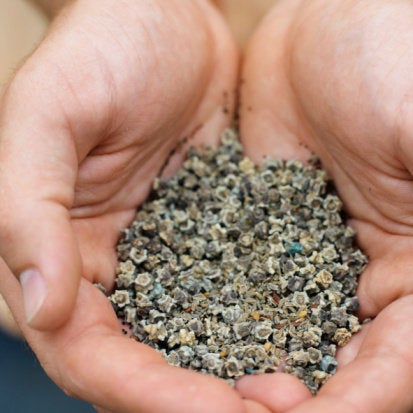
What if we get to the place where we as a society recognize the historic, proven, and lasting value of plants for their medicinal purposes? Wonderful, right?
So let's say we get to that amazing place...
And then these plants, and those that understand their uses, aren't available because we haven't protected these natural resources. What an awful scenario for US.
Even more dramatic, what does it mean to the rest of the world if these resources aren't available.
The World Health Organization estimates that 80 percent of the population in developing countries relies on medicinal herbs to meet their PRIMARY health-care needs.
And furthermore, as I recently learned, every two weeks a language disappears.
Thus, this mental and physical erosion jeopardizes the health of the planet and its inhabitants. How profoundly scary.
The GOOD new is that on a recent trip to Costa Rica I learned that the opportunity exists to change these statistics and pattern of loss that threatens not only our ecosystem but the relationships of peoples as close as your neighbor and as far as the remote islands of the Pacific. And it begins with planting a seed...a sacred seed.
Semilla Sagradas -- what are Sacred Seeds? Tom Newmark, president of New Chapter Inc., and Steven Farell, president of Luna Nueva, founded Semillas Sagradas (Sacred Seeds) with the first Sacred Seeds sanctuary here at Luna Nueva (www.fincalunanueva.com) five years ago. Steven and Tom united around a shared passion for conserving traditional medicinal herbs and healing practices, noting that cultural extinction is occurring as rapidly as biological extinction.
Their dream realized here, they created the International Sacred Seeds program. The program -- a network of sanctuaries preserving biodiversity and plant knowledge managed by the William L. Brown Center at the Missouri Botanical Garden -- creates Sacred Seed sanctuaries around the world to promote the traditions and conservation of the plants of local communities. In different countries, the Sacred Seeds program is helping to sustain family and tribal traditions. For example, mothers in Huamachuco, Peru will teach their children about growing the seeds, and the plants' medicinal purposes. The added gift? "Dignity," states Ashley Glenn, Sacred Seeds program manager. "In places where women have lost everything, the Sacred Seeds program has the ability to restore their maternal role as teachers to their children."
As we trek through the Sacred Seeds garden here at Luna Nueva (after the most amazing organic watermelon, ceviche, greens and local chicken or beans), we stop at each plant and learn. "Did you know that the avocado leaf tea helps heal irritated lungs" points out Michael Balick, Ph.D. Vice President for Botanical Science, The New York Botanical Garden. Later, Tom grabs, a leaf: "This is quassia ('Hombre Grande') bitters. It's a key ingredient in Angostura bitters -- a known digestive remedy." Then there's the Chan seed -- a mucilaginous seed known to promote digestion. And so on. With every step unfolds another traditional medicinal world gem -- and a story of the people who've brought it to us all and how it's meant to be used.
My experience becomes complete with a tour of the farm ("finca") here. I learn first it's the goats, then it's the pigs, then the crop and the harvest -- as Steven teaches me that on a true biodynamic farm it is the land that is a living organism and thus, it is the living organisms that work the farm. As we walk, I'm given leaves and flowers to test my palate...oh and termites, "for their probiotic benefit." Steven stumps and delights me with his knowledge. Our walking path was cleared by oxen, the steps through the rainforest made of stones carried by local workers who in their spare time used fallen trees to create a hut complete with table and chairs. Oh, and one can't forget "nature's classroom" made from a fallen tree with foot-rests from mushrooms. And then back to the group dining hall, where I'm given a cracked open baby coconut -- to hydrate of course -- and then an organic meal where every bite both heals (turmeric dressing, ginger fish) and delights the palate.
For more information on the Sacred Seeds program and taking the Sacred Seeds Challenge by starting your own garden, see the April/May issue of Organic Gardening (pages 24-25) on stands March 5th. For a true Edu-Cation (my new term for the best learning vacations ever!) visit www.fincalunanueva.com